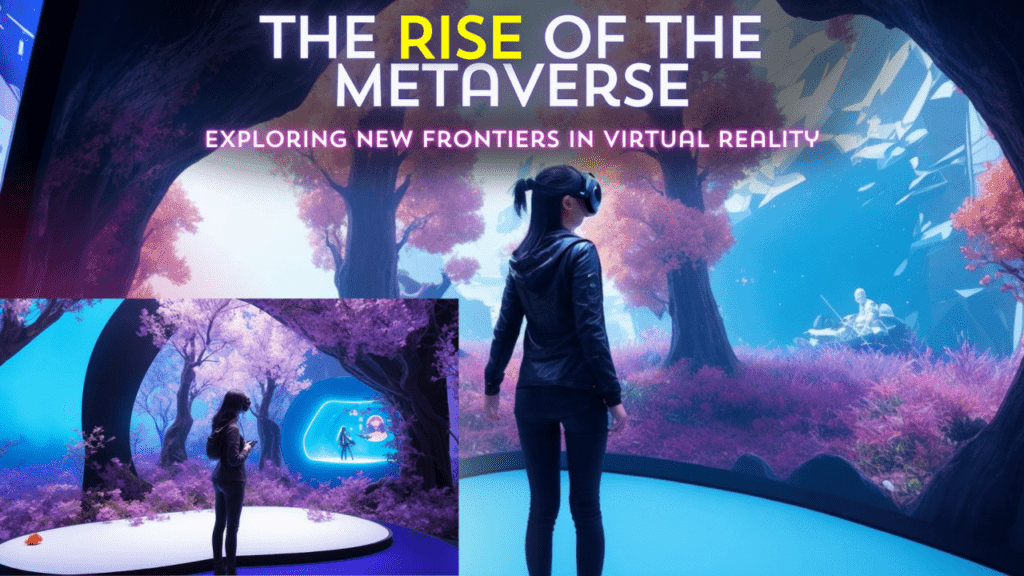

The gaming industry is no stranger to innovation, but the arrival of the Metaverse has taken things to a whole new level. At its core, the Metaverse aims to create interconnected digital universes where users can seamlessly interact, play, and build experiences. But to truly unlock its potential, one key element stands out: interoperability.
Imagine playing a game where your unique avatar, assets, or progress can travel across platforms, virtual worlds, and ecosystems without limitations. This is the future interoperability promises, and it’s already reshaping how we think about gaming, Virtual Reality (VR), Augmented Reality (AR), and Mixed Reality (MR). Let’s dive into what this means and how it’s setting the stage for the next gaming revolution.
What Is Interoperability in the Metaverse?
Interoperability in the Metaverse is all about breaking down barriers between platforms, games, and virtual worlds. Instead of siloed environments, interoperability enables users to:
- Carry their avatars, assets, and digital identities across multiple virtual worlds.
- Interact with players from other ecosystems without restrictions.
- Share resources, currencies, and items seamlessly between games or platforms.
Think of it as a unified digital experience where your Fortnite skin, Roblox items, or even your Cryptopunk NFT can follow you into any virtual space.
The Role of Gaming in Driving Interoperability
Gaming has become the beating heart of the Metaverse. From popular virtual worlds like Roblox and Decentraland to immersive experiences in VR and AR, the gaming sector is setting interoperability trends. Here’s why gaming plays such a pivotal role:
- Massive User Engagement: Millions of players worldwide interact in virtual worlds daily, making gaming the perfect testing ground for cross-platform systems.
- Virtual Assets Economy: Gamers are already familiar with trading in-game currencies, NFTs, and virtual items, laying the groundwork for interoperable marketplaces.
- Immersive Technologies: With VR, AR, and MR enhancing gaming experiences, the demand for seamless transitions between platforms is skyrocketing.
Real-World Examples of Interoperability in Gaming
Several companies and projects are already pushing the boundaries of what’s possible:
- The Sandbox: A decentralized virtual world where players can create, own, and monetize gaming experiences, supporting NFT transfers across platforms.
- Decentraland: Users can buy virtual real estate or carry their avatars and NFTs into other worlds.
- Epic Games: The company behind Fortnite is leading efforts toward open virtual spaces, even enabling cross-platform play between consoles, PCs, and mobile devices.
These projects highlight the potential for a unified Metaverse where players are free to explore without limitations.
Benefits of Interoperability in the Metaverse
Why does interoperability matter for gamers? Here are the top benefits:
- Enhanced User Experience: Seamless transitions between games and worlds make interactions more immersive and rewarding.
- Ownership and Value: Gamers can truly own their assets and use them wherever they want, increasing the utility and value of in-game items.
- Collaboration and Creativity: Shared ecosystems foster collaboration between developers, players, and creators, resulting in more innovative experiences.
Challenges on the Road to Interoperability
Of course, creating a fully interoperable Metaverse isn’t without hurdles.
- Technical Limitations: Different platforms use varying technologies and standards, making integration complex.
- Security and Privacy Concerns: Sharing data and assets across ecosystems raises risks for hacking and unauthorized access.
- Monetization Conflicts: Companies must find ways to balance profits while enabling cross-platform sharing.
Despite these challenges, the progress being made is inspiring. Collaborative efforts, such as the Open Metaverse Alliance (OMA3), aim to standardize protocols and solve these problems.
The Future of Gaming in an Interoperable Metaverse
The road ahead is full of possibilities. As interoperability becomes mainstream, gamers can expect:
- A Unified Digital Identity: One avatar to rule them all, carrying achievements, assets, and even social networks across virtual worlds.
- Innovative Game Mechanics: Developers can create games that span multiple platforms, combining genres, styles, and ecosystems.
- Expanding Economies: A robust Metaverse economy where virtual assets hold real-world value across diverse ecosystems.
This is not just the future of gaming but a reimagining of how we engage with digital spaces.
FAQs
Q1: What technologies enable interoperability in the Metaverse?
A1: Blockchain, decentralized protocols, and cross-platform APIs are key enablers. NFTs also play a significant role in transferring assets securely.
Q2: Will interoperability increase costs for gamers?
A2: Initially, there may be costs for transferring assets or upgrading to interoperable platforms, but in the long run, it will reduce redundancy and increase the value of digital items.
Q3: How can developers benefit from interoperability?
A3: Interoperability fosters collaboration, access to larger user bases, and opportunities to monetize innovative cross-platform experiences.
Conclusion: Gaming Beyond Boundaries
The Metaverse promises a future where virtual worlds are no longer isolated but interconnected. For gamers, this means endless possibilities—whether it’s exploring diverse ecosystems, owning assets with real value, or diving into immersive experiences without limits.
Interoperability is the bridge to this future. While challenges remain, the progress being made by industry leaders, developers, and platforms suggests a bright horizon for both gaming and the Metaverse. So, get ready—it’s time to embrace gaming beyond boundaries!




